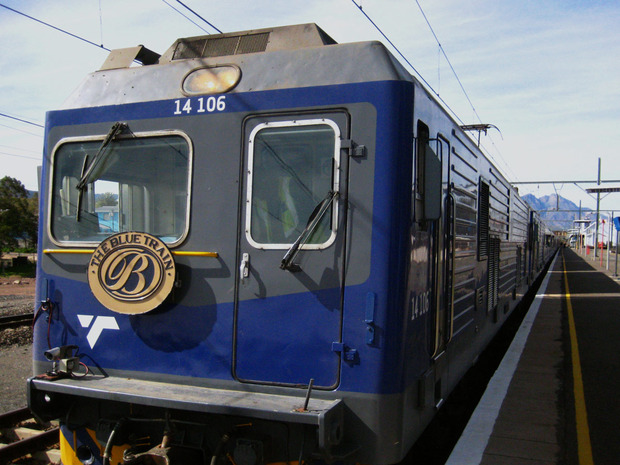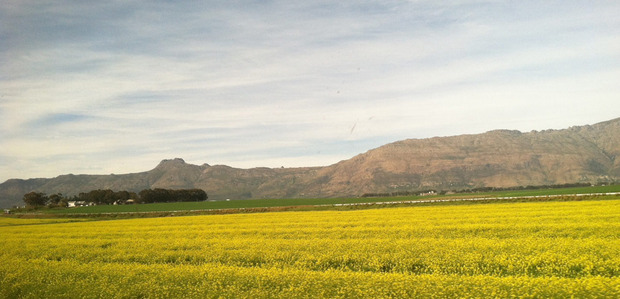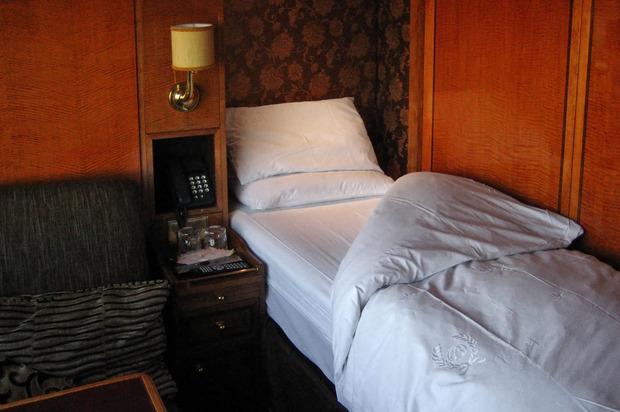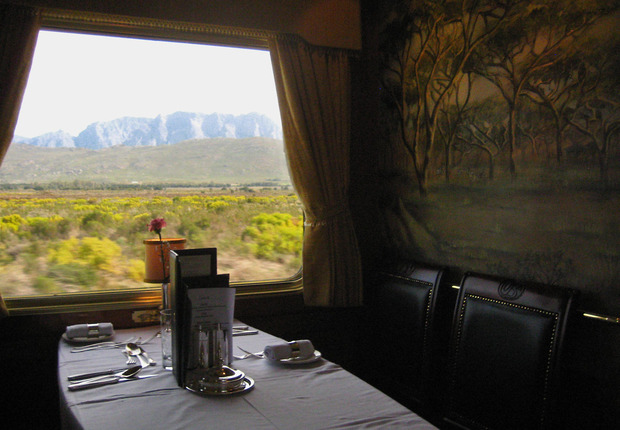Blue Train: Pretoria to Cape Town
A peek into the “Window to the Soul of South Africa” aboard the legendary locomotive

by Laura Feinstein

One of the most iconic symbols of luxury in South Africa, the famous Blue Train line has spent the last 67 years taking visitors on an adventure through the country’s stunning and diverse scenery. Starting in Pretoria, the Blue Train travels through a range of backdrops—from the Winelands, through the country’s storied mountain ranges, to small hamlets and towards its final destination, Cape Town. A technicolor throwback to an era when train travel was the height of modernity and refinement, a journey on the Blue Train today is a unique, opulent opportunity.

Nicknamed the “Champagne Train” by locals, the locomotive’s journeys used to coincide with the Union Castle Liners mail and passenger ships. Those docking in Cape Town would travel up north to prospect the gold and diamond fields, and it was rumored that onboard champagne flowed like water.
The first passenger-only incarnation of the Blue Train was launched just after WWII in 1946 to coincide with King George VI’s visit to the country. The Blue Train from that point on became the preferred method of travel for the upper classes, and it has been said a Friesland cow was specially kept on board to provide fresh milk at breakfast. Though many upgrades have occurred over the years, the most famous revamp was in 1997 when a sister line was added that traveled from Pretoria to Cape Town. One of those who christened this relaunch was Nelson Mandela; able to ride the train not only as a free man, but also as president. “I had the honor of being Madiba [Mandela] and Graça Machel’s personal butler from Pretoria to Cape Town with guests like Quincy Jones, Mia Farrow, Naomi Campbell and our own film producer Anant Singh,” manager Herbert Prinsloo tells CH. As Prinsloo also mentions, the Blue Trains had several repeat customers over the years—some returning as many as 150 times.
Traditionally, guests were the elite and were required to dress in their best—ladies in evening gowns and men in tuxedos. Fortunately, journeys today are open to anybody. They still encourage traditional attire: “But the tuxedo and evening gowns are not so many. I guess life has taken on a much faster pace,” notes Prinsloo.

Boarding in Worcester—a small post-industrial town a reasonable drive from the pristine, predominately Afrikaner college town of Stellenbosch—CH was introduced to the Blue Train by luxury travel agency followme2Africa. Tasked with showing us the best in South African culture and design in preparation for Cape Town’s role as World Design Capital 2014, the timeless aesthetics and retro glamour of the Blue Train made it an obvious choice. “It’s been around for as long as I’ve known, and it’s a different way to see the country as you pass through,” Angie Fuller of followme2AFRICA tells us.
Amenities aboard include local touches and decor by Quantum, glossy chestnut rooms, Italian marble and gold-plated bathrooms, corridors with large picture windows and decadent lounge seating areas—in essence it’s a fully functional, moving boutique hotel.

Walking the length of the train, rows of secluded passenger cabins with polished wooden doors provide an aura of mystery, and the relaxed dining atmosphere also lends itself to easy discussion between tables. Guests we spoke to ranged from the just barely out of school, to those looking for a grand experience to visiting professionals. “It remains an icon in the country and the pinnacle of luxury. Today, it has become relatively more accessible,” Gabrielle Ribeiro of the Blue Train tells CH. “We see many South Africans traveling on board and experiencing the grandeur. So many recall it from their early childhood days and hold treasured memories of seeing it pass along and wishing they could be on it—and now for many it is a dream come true to travel onboard.”
For those traveling to South Africa for the Design Indaba-sponsored South African Design Week, we recommend starting in Pretoria and traveling to Cape Town. If you have extra time, the team at followme2AFRICA can also arrange custom tours.
Photos by Laura Feinstein











